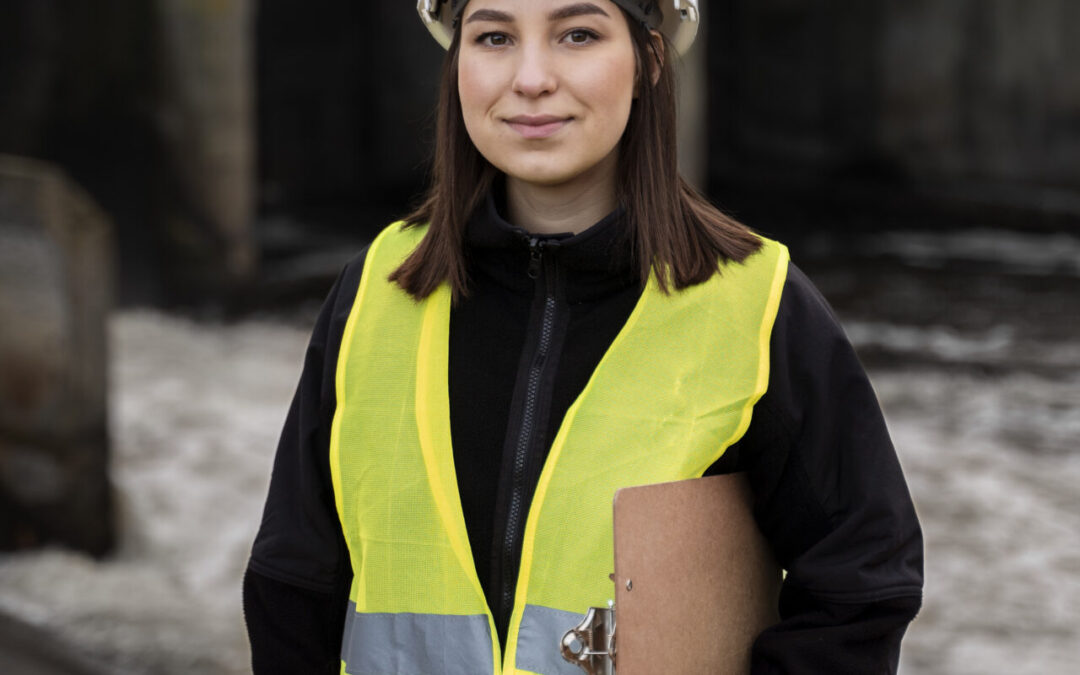The Mine Safety and Health Administration (MSHA) plays a critical role in safeguarding the health and safety of workers in the mining industry. Mining environments present many hazards, and it is the responsibility of the organization to ensure the use of proper personal protective equipment (PPE) to mitigate these hazards. Workers are protected from injuries or fatalities by MSHA inspectors who evaluate compliance with safety standards, including PPE requirements. This article explores the essential role of MSHA inspectors in enforcing PPE regulations, highlights the types of protective equipment required for different mining operations, and emphasizes the importance of maintaining a strong safety culture to minimize workplace risks.
Main Responsibilities of MSHA Inspectors During Site Inspections
MSHA inspectors have a crucial role in ensuring that mining operations comply with federal safety standards. Their primary responsibilities include evaluating worksite conditions, verifying the proper use of personal protective equipment (PPE), and identifying potential safety hazards. Inspectors also review training records, interview workers, and collaborate with mine operators to ensure that all safety protocols are being followed. Their goal is to minimize risks and promote a safer working environment for miners.
The Role of PPE in Preventing Accidents and Injuries in Mining Operations
Personal protective equipment serves as the last line of defense against accidents and injuries in mining. Properly fitted and maintained PPE can prevent serious injuries such as head trauma, eye damage, respiratory issues, and hearing loss. Consistent use of PPE not only safeguards individual workers but also contributes to a safer overall work environment, reducing the frequency and severity of accidents.
MSHA-Mandated Personal Protective Equipment for Underground Mining Operations
In underground mining, various types of personal protective equipment (PPE) are required to protect workers from potential hazards. Here are the most common PPE items mandated by MSHA:
- Hard Hats: These are essential to protect workers from falling debris, head bumps, and potential cave-ins.
- Safety Glasses: Eye protection is mandatory to shield against flying particles, chemical splashes, and dust.
- Respirators: Depending on the type of mine and potential airborne contaminants, respirators are often required to protect miners from inhaling harmful dust and toxic gasses.
- Hearing Protection: Noise levels in underground mines can reach hazardous levels, making earplugs or earmuffs a necessity to prevent hearing loss.
- Gloves: Protective gloves safeguard miners’ hands from cuts, abrasions, and exposure to harmful substances.
- Steel-Toed Boots: These provide foot protection against heavy equipment and accidental impacts.
- High-Visibility Clothing: Reflective vests or suits enhance a miner’s visibility in low-light or congested areas, preventing accidents.
Personal Protective Equipment Requirements for Surface Mining
The PPE requirements for surface mining and underground mining share many similarities, but they also have distinct differences based on the unique risks each environment presents. Surface mining requires high-visibility clothing, hard hats, safety glasses, and steel-toed boots. Sun protection and dust masks are also recommended for protection against environmental elements and dust.
Frequency of MSHA Inspections and Factors Influencing Their Occurrence
MSHA inspections occur at least four times per year for underground mines and two times per year for surface mines. However, the frequency can increase based on specific factors such as the mine’s safety record, the presence of hazardous conditions, or incidents reported by workers. Inspections can be triggered by complaints, past violations, or changes in mining operations that introduce new risks.
How MSHA Inspectors Assess Compliance with PPE Requirements
MSHA inspectors conduct comprehensive evaluations to ensure compliance with PPE requirements. This includes observing miners at work to verify that they are using the appropriate personal protective equipment, checking the condition of the gear, and ensuring it meets safety standards. Inspectors also review maintenance logs and ensure that PPE is being regularly inspected and replaced when necessary. Compliance checks may also involve discussions with workers to confirm their understanding of the correct use and care of their equipment.
Common PPE Violations Encountered by MSHA Inspectors During Inspections
MSHA inspectors frequently encounter violations such as the use of damaged or improperly maintained PPE, failure to wear required protective gear, and lack of proper training in PPE use. Other common issues include expired safety equipment and non-compliance with visibility standards. Addressing these violations promptly is essential to avoid penalties and maintain a safe working environment.
Consequences for Mining Operations Failing to Meet MSHA PPE Standards
Mining operations that do not comply with MSHA PPE standards face serious consequences. These can include citations, fines, or mandatory corrective actions. Repeat violations may lead to increased scrutiny, more frequent inspections, and in severe cases, temporary shutdowns until compliance is achieved. Non-compliance not only impacts a mine’s operational efficiency but also poses significant safety risks to workers.
MSHA’s Role in Ensuring Proper Training for Miners on Personal Protective Equipment (PPE) Usage
MSHA mandates that mining companies provide comprehensive training programs for workers. These programs cover the correct use, care, and limitations of personal protective equipment. MSHA inspectors may review training records and conduct interviews to ensure that workers are knowledgeable and confident in using their PPE correctly. Inspectors may also assess training sessions and recommend improvements if necessary.

Staying Updated on Changes to MSHA PPE Regulations for Mining Companies
Mining companies can stay informed about changes to MSHA PPE regulations by subscribing to industry publications, attending safety workshops and training sessions, and maintaining communication with MSHA representatives. MSHA also provides updates through its official website and newsletters, ensuring that companies can access the latest information.
The Essential Role of MSHA Inspectors in Personal Protective Equipment Compliance
The work of MSHA inspectors is vital in upholding safety standards within the mining industry. By ensuring compliance with PPE regulations, they help prevent injuries and save lives. MSHA’s dedication to rigorous inspections, education, and enforcement fosters safer working conditions and a culture where safety is a top priority.

